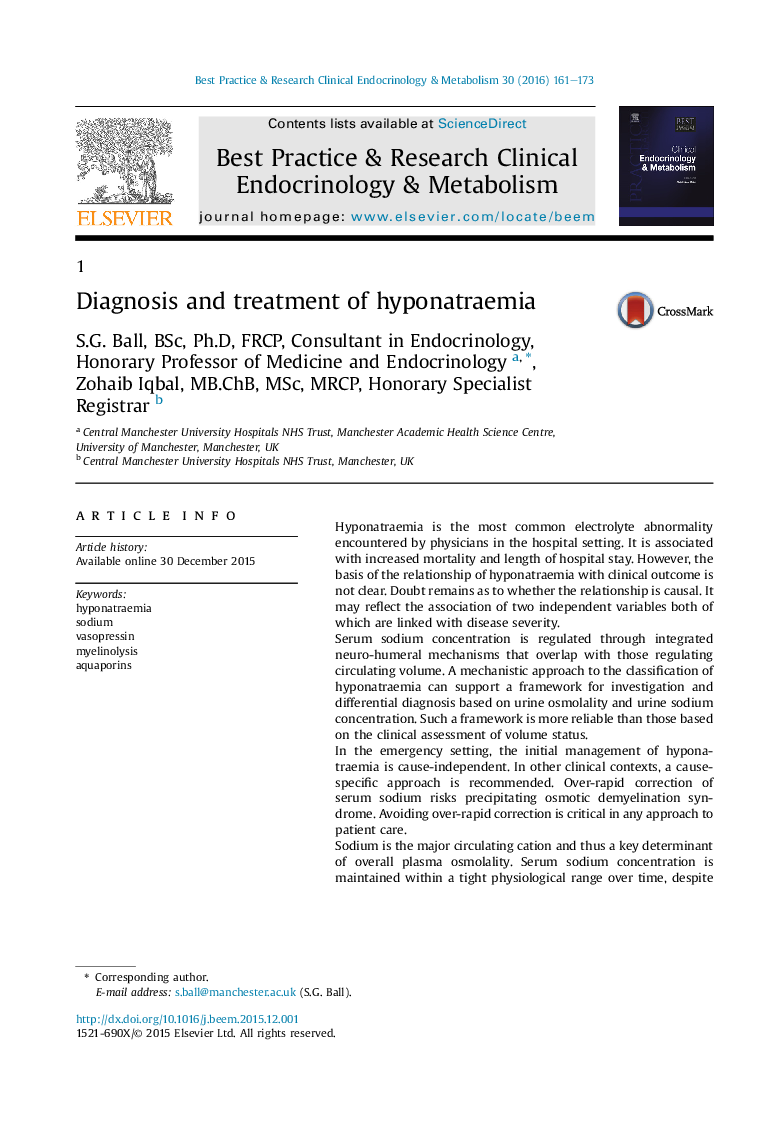| کد مقاله | کد نشریه | سال انتشار | مقاله انگلیسی | نسخه تمام متن |
|---|---|---|---|---|
| 2791479 | 1154950 | 2016 | 13 صفحه PDF | دانلود رایگان |
Hyponatraemia is the most common electrolyte abnormality encountered by physicians in the hospital setting. It is associated with increased mortality and length of hospital stay. However, the basis of the relationship of hyponatraemia with clinical outcome is not clear. Doubt remains as to whether the relationship is causal. It may reflect the association of two independent variables both of which are linked with disease severity.Serum sodium concentration is regulated through integrated neuro-humeral mechanisms that overlap with those regulating circulating volume. A mechanistic approach to the classification of hyponatraemia can support a framework for investigation and differential diagnosis based on urine osmolality and urine sodium concentration. Such a framework is more reliable than those based on the clinical assessment of volume status.In the emergency setting, the initial management of hyponatraemia is cause-independent. In other clinical contexts, a cause-specific approach is recommended. Over-rapid correction of serum sodium risks precipitating osmotic demyelination syndrome. Avoiding over-rapid correction is critical in any approach to patient care.Sodium is the major circulating cation and thus a key determinant of overall plasma osmolality. Serum sodium concentration is maintained within a tight physiological range over time, despite wide variation in both sodium and water intake. Hyponatraemia (serum sodium concentration <135 mmols/L) is the most common electrolyte disturbance in clinical practice. All clinicians should be aware of the scope and scale of the problem.
Journal: Best Practice & Research Clinical Endocrinology & Metabolism - Volume 30, Issue 2, March 2016, Pages 161–173
